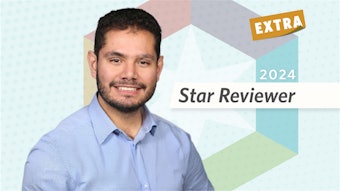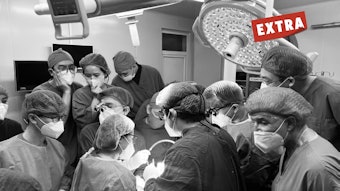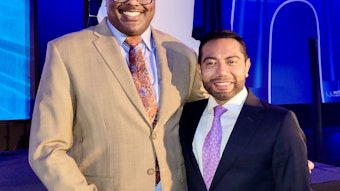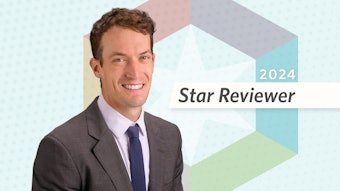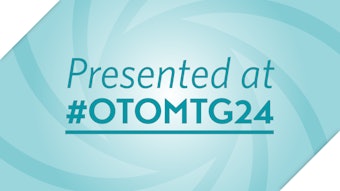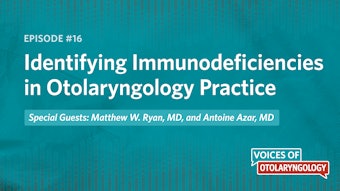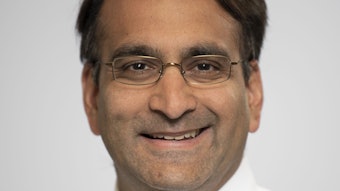Breaking Down Silos at #OTOMTG25
As otolaryngologist-head and neck surgeons, multidisciplinary collaboration is ingrained in the DNA of our specialty. Nowhere is this more evident than at the AAO-HNSF Annual Meeting & OTO EXPO.
Eric Lamarre, MD, on behalf of the Annual Meeting Program Committee
Eric Lamarre, MD, serves as section head of head and neck oncologic and reconstructive surgery at the Integrated Surgical Institute at Cleveland Clinic. He is also a member of the Annual Meeting Program Committee, helping to shape the educational content for the AAO-HNSF 2025 Annual Meeting & OTO EXPO.
In the April EXTRA edition of the Bulletin, Vaninder Dhillon, MD, began a conversation about "Finding Value Beyond Your Practice Area" and what it means to be an otolaryngologist-head and neck surgeon in 2025. Here, Dr. Lamarre picks up on the topic and expands the discussion to how cross-subspecialty learning at the Annual Meeting is a powerful tool for patient care and to prevent “scope creep."
In his February column in the Bulletin, AAO-HNS/F President Troy Woodard, MD, wrote about obstacles that make it increasingly challenging for otolaryngologist-head and neck surgeons to put the patient’s needs first. Specifically, Dr. Woodard reflected on the question, “If you could go back in time and do it all over again, would you still choose otolaryngology [as a profession]?” One of the obstacles to answering that question may be the notion of “scope creep,” described as the encroachment of other professions into our specialty leading to confusing, if not subpar, patient care.
Looking through the eyes of a patient entering a healthcare system with a thyroid nodule, metastatic squamous cell skin cancer, or a skull base tumor, the path ahead can vary greatly depending on where they enter the system. These variable entry points can lead to some heterogeneity in care and can be particularly disorienting from the patient’s perspective. Even as a clinician navigating the system on behalf of patients, it can be particularly daunting to address such questions as, “Do I refer a patient with a cerebral aneurysm to neurosurgery or neurointerventional radiology?” Or “Is the patient going to be observed first by neurology?”
As an academic head and neck oncologic surgeon, I manage thyroid cancer patients as do general surgeons and endocrine surgeons in my region. I manage skin cancer patients, as do plastic surgeons and Mohs surgeons in my hospital. And I manage skull base tumors like my fellow rhinologists and neurosurgeons do. But while medical subspecialties are built in silos, patient disease processes do not conveniently lie within the confines of one subdiscipline.
Furthermore, advancements in medical technology and therapeutic strategies have significantly transformed the management of various cancers, leading to shifts in subspecialties overseeing their treatment.
In oropharyngeal cancer, for example, the introduction of transoral robotic surgery has notably altered the treatment landscape. This approach has become increasingly favored, with many patients now undergoing primary surgery rather than relying solely on radiation or chemotherapy. Conversely, there has been a discernible shift away from surgical interventions toward immunotherapy in the treatment of advanced cutaneous squamous cell carcinoma (CSCC). The U.S. Food and Drug Administration’s approval of PD-1 inhibitors like pembrolizumab and cemiplimab has provided effective treatment options for patients with advanced CSCC, offering alternatives to extensive surgeries.
These examples underscore the dynamic nature of cancer treatment paradigms, influenced by technological innovations and evolving therapeutic options. Such shifts not only change the roles of various medical subspecialties but also highlight the necessity for multidisciplinary approaches tailored to individual patient needs. It should also be noted that head and neck surgeons have led in both technological advancements.
As otolaryngologist-head and neck surgeons, multidisciplinary collaboration is ingrained in the DNA of our specialty and, therefore, comes quite naturally. Nowhere is this more evident than at the AAO-HNSF Annual Meeting & OTO EXPO, where the advances in each subspecialty and the cross-pollination of ideas across disciplines are on full display.
I also see examples of this collaboration day-to-day when considering treatment options for my own patients. “Should this skull base tumor be approached endoscopically or by an open approach, by a rhinologist who has more experience utilizing the endoscope for skull base approaches or myself, more adept at open skull base approaches?” Optimizing surgical outcomes for each patient provides clarity in navigating these questions. Transparency in one’s own outcomes is critical to this appraisal. The underlying collaborative spirit within our specialty is natural and vital.
An interdisciplinary approach to managing complex diseases, such as thyroid disorders and skin cancers, is essential for improving patient care. By fostering collaboration across subspecialties, ensuring transparency in outcomes, and leading the conversation with innovative treatments at key forums like the Annual Meeting, we can minimize the risk of scope creep. Ultimately, this approach empowers patients by providing clearer, more navigable treatment pathways and boosts overall outcomes.

